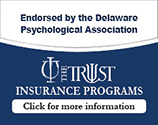How are employers evaluated for the Psychologically Healthy Workplace Award
Applicants are evaluated on their efforts in the five following areas:
1. Employee Involvement
Efforts to increase employee involvement empower workers, involve them in decision making and give them increased job autonomy. Employee involvement programs can increase job satisfaction, employee morale and commitment to the organization, as well as increase productivity, reduce turnover and absenteeism and enhance the quality of products and services.
Efforts to involve employees in meaningful ways include:
- Self-managed work teams
- Employee committees or task forces
- Continuous improvement teams
- Participative decision making
- Employee suggestion forums, such as a suggestion box and monthly meetings
2. Work-Life Balance
Programs and policies that facilitate work-life balance acknowledge that employees have responsibilities and lives outside of work and help individuals better manage these multiple demands. Conflict between work and other life responsibilities can diminish the quality of both work and home life for employees, which in turn can affect organizational outcomes such as productivity, absenteeism, and turnover. Efforts to help employees improve work-life balance can improve morale, increase job satisfaction and strengthen employees’ commitment to the organization. Additionally, the organization may reap benefits in terms of increased productivity and reduction in absenteeism, presenteeism and employee turnover.
Programs and policies that can promote work-life balance include:
- Flexible work arrangements, such as flextime and telecommuting
- Assistance with childcare
- Eldercare benefits
- Resources to help employees manage personal financial issues
- Availability of benefits for family members and domestic partners
- Flexible leave options beyond those required by the Family and Medical Leave Act
3. Employee Growth & Development
Opportunities for growth and development help employees expand their knowledge, skills and abilities, and apply the competencies they have gained to new situations. The opportunity to gain new skills and experiences can increase employee motivation and job satisfaction and help workers more effectively manage job stress. This can translate into positive gains for the organization by enhancing organizational effectiveness and improving work quality, as well as by helping the organization attract and retain top-quality employees. By providing opportunities for growth and development, organizations can improve the quality of their employees’ work experience and realize the benefits of developing workers to their full potential.
Opportunities for employee growth and development include:
- Continuing education courses
- Tuition reimbursement
- Career development or counseling services
- Skills training provided in-house or through outside training centers
- Opportunities for promotion and internal career advancement
- Coaching, mentoring, and leadership development programs
4. Health & Safety
Health and safety initiatives maximize the physical and mental health of employees through the prevention, assessment, and treatment of potential health risks and problems and by encouraging and supporting healthy lifestyle and behavior choices. Health and safety efforts include a wide variety of workplace practices that can help employees improve their physical and mental health, reduce health risks, and manage stress effectively. By investing in the health and safety of their employees, organizations may benefit from greater productivity and reductions in healthcare costs, absenteeism and accident/injury rates.
Efforts to address health and safety issues in the workplace include:
- Training and safeguards that address workplace safety and security issues
- Efforts to help employees develop a healthy lifestyle, such as stress management, weight loss and smoking cessation programs
- Adequate health insurance, including mental health coverage
- Health screenings
- Access to health/fitness/recreation facilities
- Resources to help employees address life problems, for example, grief counseling, alcohol abuse programs, Employee Assistance Programs (EAPs) and referrals for mental health services
5. Employee Recognition
Employee recognition efforts reward employees both individually and collectively for their contributions to the organization. Recognition can take various forms, formal and informal, monetary and non-monetary. By acknowledging employee efforts and making them feel valued and appreciated, organizations can increase employee satisfaction, morale, and self-esteem. Additionally, the organization itself may benefit from greater employee engagement and productivity, lower turnover and the ability to attract and retain top quality employees.
Ways of recognizing employee contributions include:
- Fair monetary compensation
- Competitive benefits packages
- Acknowledgement of contributions and milestones
- Performance-based bonuses and pay increases
- Employee awards
- Recognition ceremonies
How to apply
The PHWA application is an online process that may be accessed by clicking on the following link:
THE DEADLINE FOR APPLICATIONS IS MAY 1, 2012




